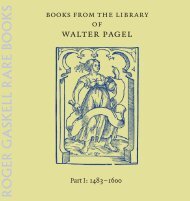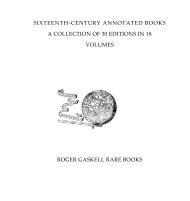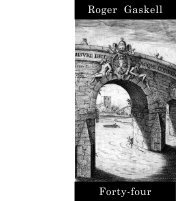pdf - Roger Gaskell Rare Books
pdf - Roger Gaskell Rare Books
pdf - Roger Gaskell Rare Books
You also want an ePaper? Increase the reach of your titles
YUMPU automatically turns print PDFs into web optimized ePapers that Google loves.
The College of Physicians had registered both Latin and English editions of<br />
De rachitide on 14 June 1650; in February the next year Peter Cole registered<br />
an English version, at the same time entering Culpeper’s Directory for Midwives<br />
and The English Physitian as well as English translations of Fernel’s works and a<br />
treatise on fevers by ‘Phil Armin.’, the pretended translator of the Glisson. The<br />
College’s favoured publisher, Philip Dugard complained to the Council of<br />
State on 5 March. The outcome is unclear, though Cole was ordered before the<br />
committee of Examinations on 16 April 1651. (Jonathan Sanderson, Nicholas<br />
Culpeper and the Book Trade, PhD thesis, Leeds, 1999, pp. 88–89).<br />
68<br />
GLISSON, Francis (1597–1677)<br />
Tractatus de natura substantiae energetica, seu de vita naturae,<br />
eiusque tribus primis facultatibus, I. Perceptiva, II. Appetitiva, & III.<br />
Motiva, [brace] naturalibus, &c.<br />
London: typis E. Flesher. Prostat venalis apud H. Brome sub signo<br />
Bombardae in Coemeterio Paulino, & N. Hooke ad insignia Regia in vico<br />
Little Britain, 1672.<br />
4to: A4 (+/– A1) a–f4 (–f4 presumed blank) B–3Y4 , 295 of 296 leaves,<br />
pp. [54] 534 [2] (errata on last leaf, verso blank). A1, engraved portrait<br />
signed ‘W. Faithorne del. et fecit’ showing Glisson aged 75, printed<br />
on thicker paper and possibly supplied from another copy or another<br />
work.<br />
2 engraved plates of diagrams (bound at the end).<br />
198 x 150mm. Some browning, worm tracks in blank corners in sigs<br />
3G–3L.<br />
Binding: Contemporary vellum boards.<br />
Provenance: Shelf mark XVIII.6 on pastedown; old oval library stamp<br />
on a2 (illegible).<br />
First edition. Advertised in the Michaelmas Term Catalogue (October–<br />
December) at 8s, bound (TC I, p. 120.) Wing G858; ESTC R37387;<br />
Wellcome III, p. 126; Krivatsy 4827; Waller 10809.<br />
‘Glisson maintained that the Wrst draft of the Tractatus de ventriculo et intestinis<br />
was written around 1662 but was set aside in favor of the Tractatus de natura<br />
substantiae energetica (1672), dedicated to Anthony Ashley Cooper, Lord<br />
Shaftesbury, whose family Glisson had long served as physician. The work<br />
attempts to prove there is life in all bodies. In socalled inanimate bodies it<br />
is speciWed by their forms, whereas in plants and animals life is modiWed to<br />
become the vegetative soul and the sensitive soul, respectively. In animals the<br />
implanted life (vita insita) is duplicated and triplicated by the inXux of blood<br />
(vita inXuens) and by the psychic regulations.’ (Owsei Temkin, 5:426b.)<br />
The engraved portrait in this copy is the engraving by Faithorne after<br />
his painting now at the Royal College of Physicians (Chaplin, Descripitive<br />
catalogue of the Portraits... in the Royal College of Physicians, 1926, p. 20). The<br />
engraving must surely have been made for this book (and catalogued as such<br />
by Renate Burgess, Portraits of Doctors & Scientists in the Wellcome Institute







